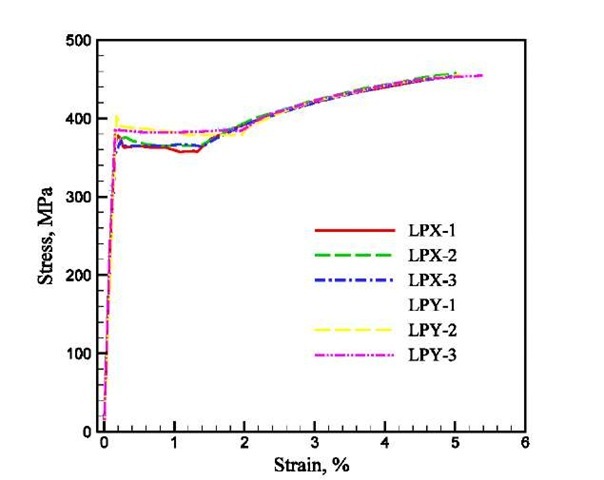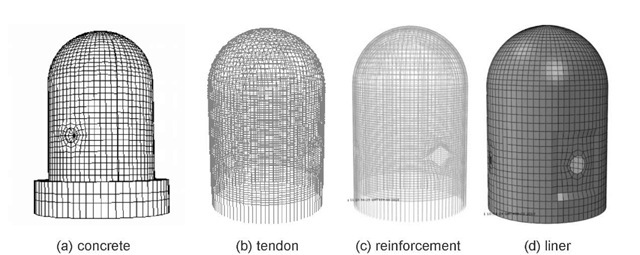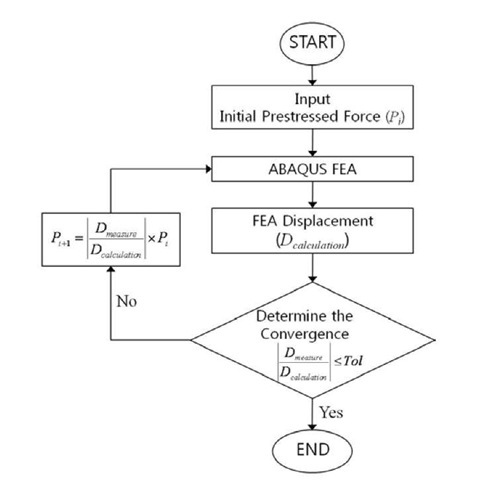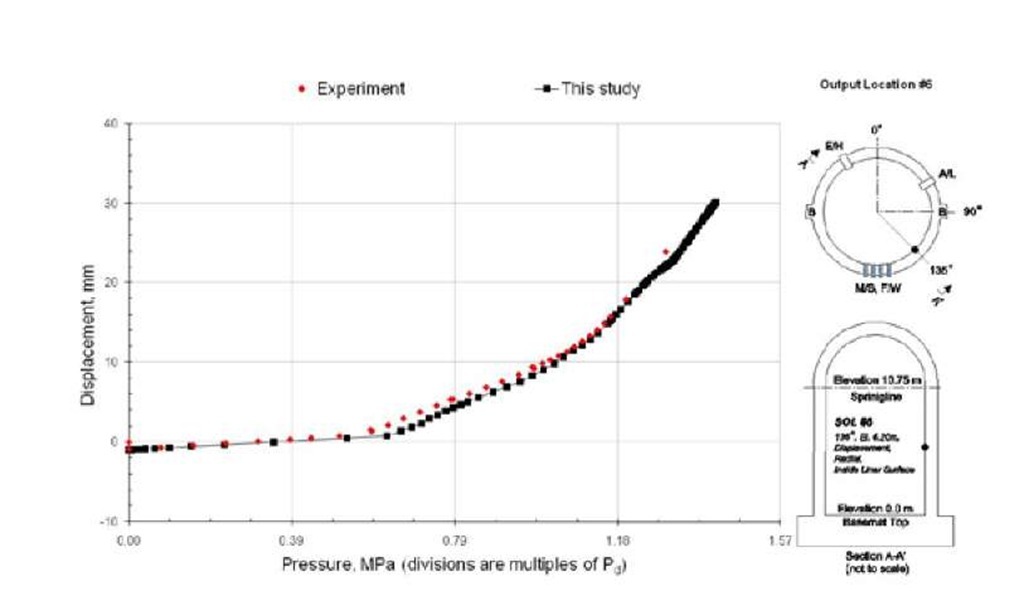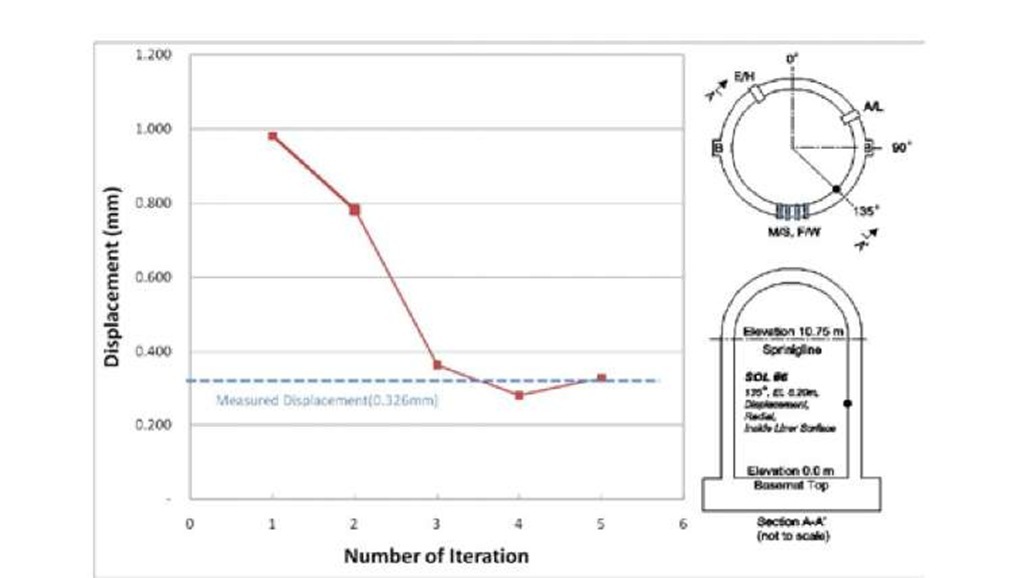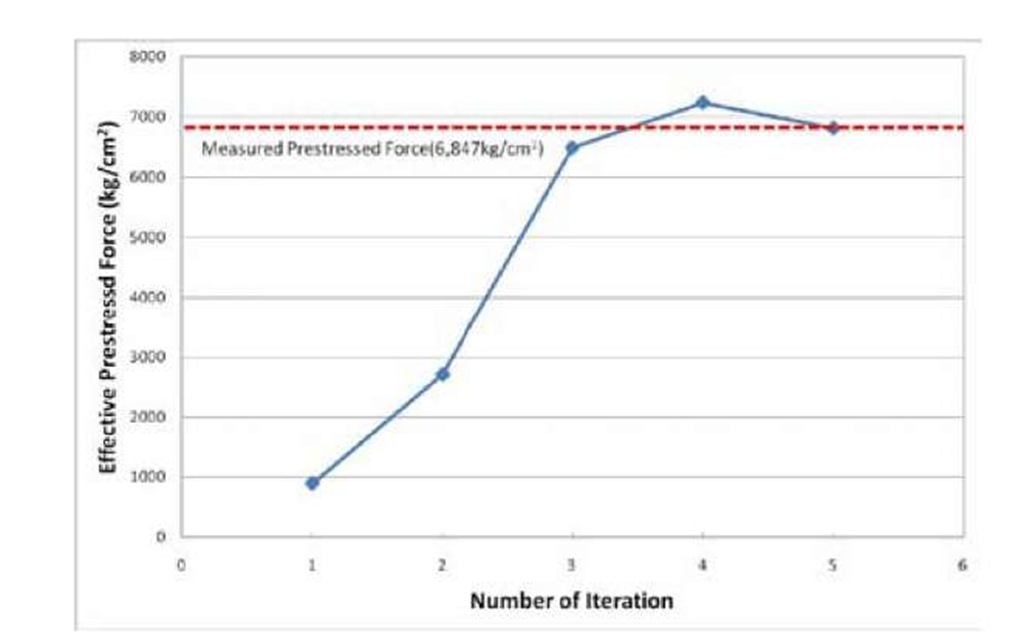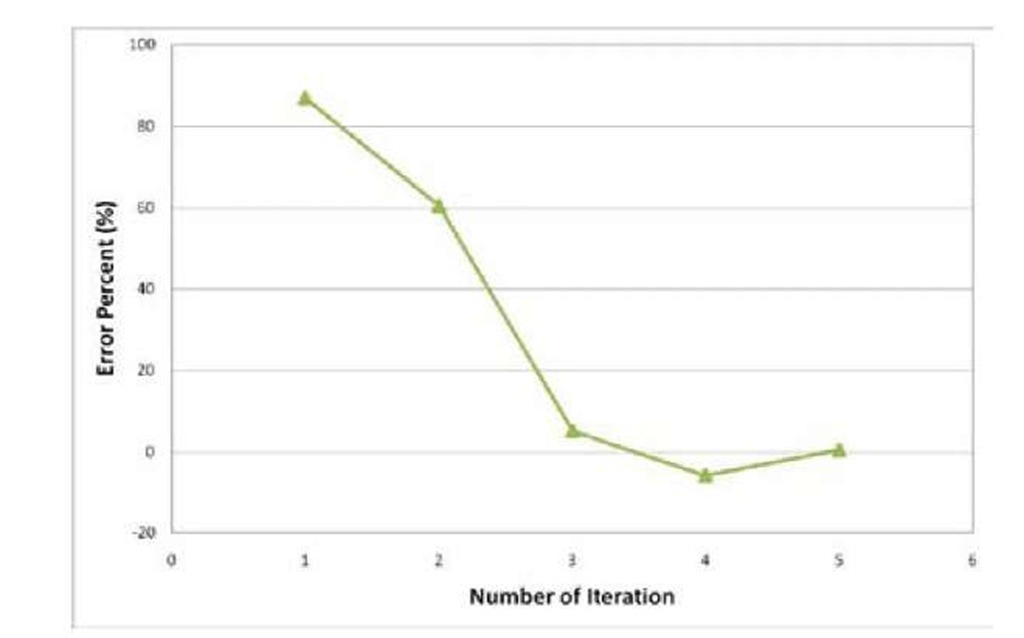FINITE ELEMENT MODEL
Fig. 4 shows the finite element mesh of concrete, steel rebar and tendon. The mesh for concrete wall and dome are use lower order solid elements (ABAQUS elements C3D8, lagranginan formulation). The steel rebar and prestressing tendon is modeled with truss elements as displayed in Fig. 5 (T3D2). The truss element are coupled with the mother element, that is solid element, of the concrete with the *EMBEDDED ELEMENT function of ABAQUS. In this function, the nodes of a truss element are kinematically constrained to the nodes of the solid element in which it is located. It means that the displacement of the node of truss element is average value of the displacement of the neighboring nodes of the solid element in which the truss element is embedded. The mesh for steel liner plate are used 4-node membrane element (M3D4).
Fig. 4 Stress-strain relationship for steel liner
The prestressing force for tendon is represented by the *INITIAL CONDITION opting in ABAQUS. The tendons are assumed to remain rigidly bonded to the concrete. Therefore, the slippage of a tendon within the tendon sheath cannot be considered in the present finite element analysis model. The boundary condition for the bottom of the basemat is assumed to be fixed and this model also cannot simulate the possible vertical uplift internal pressurization.
Fig. 5 Finite element models for PCCV
SI TECHNIQE
SI (System Identification) technique si defined as a type of inverse problems to estimate stiffness parameters of structure from the results such as displacement, stress at el., between measured responses and calculated responses with finite element method. To find a optimized solution, iterative works may be performed several times. Fig. 6 shows the SI technique with ABAQUS finite element program.
Fig. 6 SI technique procedure
FEA AND SI RESULTS
To verify the three dimension finite element model as mentioned section 2, nonlinear finite element analysis was employed. Fig. 7 shows the result of finite element analysis for 1:4 scale prestressed concrete containment vessel. The sampling point of the displacement is the mid-height of the wall which is elevation 10.73 m. The finite element analysis and experiment result curves are very well matched. Accordingly, finite element mesh is well-formed.
Fig. 7 Finite element analysis result
Using the proposed SI technique, iterative analysis was performed to find out the experimental measured displacement value at mid-height of the PCCV. In this case, because the true prestressed force of the tendon was known, initial prestressed force (Pi) was inputted the 0.1 times value of the real prestressed force at the first step. And then second prestressed force (Pi+1i) was calculated with respect to the SI procedures in Fig. 6.
Fig. 8 ~ Fig.10 show the results for displacement, effective prestressed force and error rate derived by proposed SI technique in this paper. Convergence rate is very fast as shown in these figures.
Fig. 8 Displacement and number of iteration relationship
Fig. 9 Assessment result of tendon force
Fig. 10 Convergence process of SI technique
CONCLUSION
This paper describes SI technique to predict the effective prestressed force of nuclear containment building. And simple SI technique was proposed. To verify the proposed SI technique with finite element method, three dimension finite element analysis was employed at the 1:4 scale prestressed concrete containment vessel tested by SNL. From the analysis results, the proposed SI technique is useful to estimate effective prestressed force of containment building.
